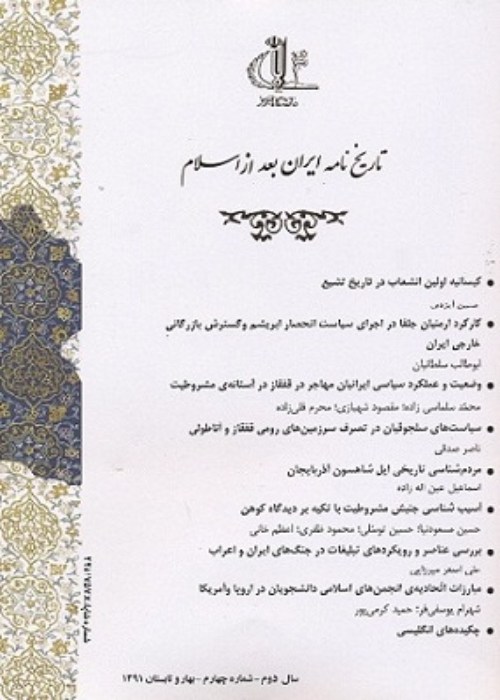The Conflict Between Agrarian-subsistence economy and Agrarian - commercial economy The Conflict Between the State and Peasants over Commercial and Subsistence economy, 1304-1320
The object of this paper is to study the conflict between agrarian- subsistence economy and agrarian-commercial economy during the period of 1304- 1320/1925-1941. It is an interesting historical enigma that although a modern state was being formed in Iran during this period, nevertheless the old landholding system survived and the economic relations which corresponded to this system, continued to dominate the peasant economy. One would expect that changes were bound to occur as capitalism was growing in society and the commercial economy was making headway in the economy as a whole. Yet, not only the government and the landlords refrained from changing the old system of farming , but peasants, too, showed lack of interest in abandoning their traditional mode of production. Therefore, the question can be asked that why did Iranian peasants confronted the government's efforts to promote commercial agrarian economy during the Reza Shah’s era? It can be argued that peasants were more interested in upholding their subsistence economy. Their goal was not to maximize their own income, but to save their family at the existence level. Unfavorable weather conditions, crop diseases, unfamiliarity with market relations and international politics were new domains which led the landowners as well as the farmers to distrust the commercial farming. Instead, they continued to cultivate their land according to the previous method of subsistence farming. Thus, the influence of capital and the prevalence of capitalist agricultural economy, did not bring about any substantial changes in the agrarian relations or the social status of the peasantry. They did not abandon the economic rules that had been kept over many centuries in Iran's agricultural system. Methods of production were reflected in the traditional social system. Consequently< the socio – economic relations between landowners and peasants were strengthened and this led to the integrity of the village system.
- حق عضویت دریافتی صرف حمایت از نشریات عضو و نگهداری، تکمیل و توسعه مگیران میشود.
- پرداخت حق اشتراک و دانلود مقالات اجازه بازنشر آن در سایر رسانههای چاپی و دیجیتال را به کاربر نمیدهد.


